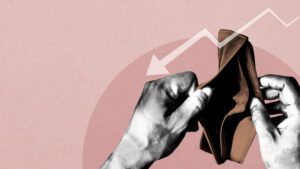6 Things to Do After Bankruptcy Discharge
Bankruptcy discharge can feel like you’ve reached the end of a grueling marathon. This legal tool that absolves you of certain debts also carries a significant emotional and financial toll. But it’s essential to remember that it’s also a new beginning—a chance to rebuild your financial life. So, what are the things to do after a bankruptcy discharge? Let’s explore six crucial steps to take toward financial recovery.
Understanding Your Bankruptcy Discharge
A bankruptcy discharge is an official decree issued by the court, liberating you from any personal obligations of particular categories of debts. Essentially, it absolves you from the legal responsibility of repaying these specific debts. Nonetheless, it is crucial to note that not all debts are subject to discharge. While outstanding credit card balances, medical expenses, delinquent utility bills, and personal loans can be completely eradicated, certain types of debts, such as student loans, child support, and most tax liabilities, persist even after the bankruptcy process.
Step 1: Obtain and Review Your Bankruptcy Documents
After a bankruptcy discharge, the first thing to do is to obtain and thoroughly review your bankruptcy documents. Understanding these documents is vital as they form the foundation of your fresh start. They include the record of discharged debts, which can help you fend off any future attempts by creditors to collect on those debts. You can obtain these documents from your attorney or the bankruptcy court’s clerk’s office. It’s extremely important to review carefully before filing for Chapter 7 bankruptcy. You want to avoid mistakes as much as possible this time.

Creating a Financially Stable Environment Post-Bankruptcy
One of the most important aspects of recovery is creating a stable financial environment post-bankruptcy. That involves setting realistic financial goals, developing and sticking to a budget, and steadily working towards rebuilding your credit. It’s also important to establish an emergency fund, which can provide a financial buffer and prevent you from falling back into debt in the face of unexpected expenses.
Moreover, it’s crucial to educate yourself about financial management. There are many resources available, both online and offline, that can provide guidance and help you develop the skills needed to manage your finances effectively. That can involve learning about budgeting, understanding credit, and making wise investment choices. As our friends at My Brooks Moving recommend, getting professional help to move your company and start fresh might be the best thing you can do.
Remember, bankruptcy is not the end but a fresh start. It provides an opportunity to reassess your financial habits and make changes that can lead to a more secure financial future. While it’s a challenging process, you can recover and even thrive after bankruptcy discharge with patience, diligence, and the right approach.
Step 2: Check Your Credit Reports
After bankruptcy, your credit report should reflect that all discharged debts are now at a zero balance. Obtain free credit reports from all three major credit reporting agencies—Experian, Equifax, and TransUnion—and review them for discrepancies. If you find any errors, you should dispute them immediately. Ensuring the accuracy of your credit report is a critical step in the list of things to do after bankruptcy discharge.
Before we move to the next steps, let’s briefly detour and discuss common mistakes people make before filing for bankruptcy. Many people fail to understand the gravity of the situation and continue to make poor financial decisions, such as using retirement funds to pay off debts or failing to seek professional help.
Regarding filing for bankruptcy, the most common mistake is not accurately assessing eligibility. It’s important to understand how to determine if you should file Chapter 7. That involves thoroughly examining your income, assets, expenses, and unsecured debt. Consulting with a bankruptcy attorney can provide valuable guidance.

Step 3: Establish a Budget
The next thing to do after bankruptcy discharge is to create a budget. Living within your means is the cornerstone of financial stability. Consider your income and expenses and formulate a budget that ensures you can meet your needs without resorting to debt. It’s also wise to build an emergency fund to handle unexpected expenses without falling into debt.
Step 4: Begin Rebuilding Your Credit
Rebuilding credit is one of the most important things to do after bankruptcy discharge. Start with a secured credit card, which requires a deposit that serves as your credit limit. By making small purchases and paying off the balance monthly, you can build a positive credit history. Remember, timely payments are key to improving your credit score.
Step 5: Stay Insured
Many people overlook the importance of insurance in maintaining financial health. Ensure you’re adequately insured, whether health, home, auto, or life insurance. Insurance can prevent a single event from spiraling into a financial catastrophe, so don’t overlook it on your list of things to do after bankruptcy discharge.
Step 6: Seek Financial Education
Finally, seek to improve your financial literacy. Bankruptcy can be a humbling experience, and it’s essential to learn from it. Consider enrolling in financial literacy programs, reading personal finance books, or consulting a financial advisor. Knowing more about managing money can help you avoid financial pitfalls in the future and make more informed decisions. Seeking financial education is not just the last on our list of things to do after bankruptcy discharge but an ongoing process that should continue throughout your life.

Understanding the Impact of Bankruptcy on Future Finances
A bankruptcy discharge is a significant financial event that has lasting effects. It’s important to acknowledge the reality of the situation and take steps to mitigate its impact. Bankruptcy can affect your ability to obtain credit, buy a home, or even find a job in some cases. However, the impact of bankruptcy isn’t permanent and doesn’t have to dictate your financial future.
Chapter 7 bankruptcy, the most common type, stays on your credit report for ten years, while Chapter 13 bankruptcy remains for seven years. During this period, it might be challenging to secure loans or credit. However, this situation gradually improves, especially if you consistently demonstrate financial responsibility. Your credit score will start to recover as you begin to manage your finances better, pay all your bills on time, and avoid falling into debt.
Conclusion
Emerging from a bankruptcy discharge can be daunting, but it’s crucial to remember that this is your chance for a fresh financial start. By following these six steps—obtaining and reviewing your bankruptcy documents, checking your credit reports, establishing a budget, rebuilding your credit, staying insured, and seeking financial education—you can confidently navigate the path to recovery.
In this journey, patience and persistence are your best friends. It takes time to rebuild credit and regain financial stability. But with diligence and the right approach, you can rise from the ashes of bankruptcy and lay the foundation for a secure financial future.
Bankruptcy is not the end—it’s a new beginning. So, make the most of it by following these things to do after bankruptcy discharge. You can navigate back to financial stability and security with careful planning and discipline. And remember, you’re not alone in this journey—many resources are available to guide you.
